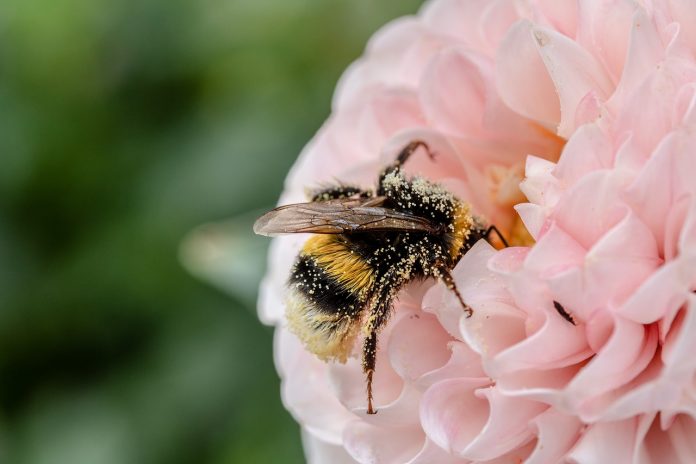The importance of bees and other pollinators can’t be overstated — every other species relies on them for survival. However, in recent years, bee populations — both managed and wild — have struggled. As a result, more people have started managing their own hives to help.
If you think beekeeping is a lot of work, you’d be right. If you think there’s a lot of science involved, that’s true, too. If that kind of investment just doesn’t appeal to you, that’s ok. You can still help by enhancing the activity of wild bee populations.
Wild bees
Sure, managed honey bee populations are big contributors when it comes to pollinating our crops and flowers. However, when they experience periodic declines in populations, wild bees help supplement pollination. Wild bees pollinate a variety of crops — apples, pears, nuts, strawberries, tomatoes, peppers, blueberries, squash and melons — and even provide a majority of pollination for some summer vegetables.
Unlike other types of stinging insects, wild bees are not known to attack humans. Most types lead solitaire lives and do not have a colony to defend.
Common types of wild bees
Bumble bees — known to pollinate blueberries, cane berries, orchard crops, peppers, tomatoes and more.
Sweat bees — known to pollinate alfalfa, cane berries and onion.
Leafcutter bees — known to pollinate alfalfa and melon.
Squash bees — known to pollinate cucumber, melon, pumpkin and squash.
European honey bees — known to pollinate orchard crops, squash, melon, soybeans, sunflower, alfalfa and others.
Mason bees — known to pollinate cane berries and orchard crops.
Mining bees — known to pollinate blueberries and orchard crops.
How to help the wild bees
We can help enhance wild bee populations by conserving natural habitats, increasing access to flowers, providing access to clean water, preserving and building nesting sites and reducing exposure to pesticides.
- Conserving natural habitats. Wild bees rely on forests, meadows and wetlands for nesting sites and access to flowers for nectar and pollen. You can help conserve these spaces on your own land or you can work with community groups and nonprofit organizations to protect them through grant programs.
- Increasing access to flowers. By planting a variety of flowers with overlapping bloom cycles, you can provide wild bees with a steady source of food throughout the growing season. Those with farm land can help by planting flowering herbs or ornamentals within a crop field, establishing hedgerows of flowering woody plants or native perennial plants in marginal land, harvesting flowering crops in strips rather than all at once and allowing leafy crops to produce flowers rather than harvesting them all.
- Providing water. Bees need access to clean, pesticide-free water, especially during the summer months. You can provide better access with well-maintained drainage ditches, irrigation ponds, birdbaths or even by leaving puddles when you water your garden.
- Preserving and building nesting sites. Many wild bees will create individual nests in soil, plant material and in the abandoned nests of other animals. You can preserve these nesting areas by not tilling or exposing them to broad-spectrum pesticides. If you decide to provide an artificial nesting site by building a bee box, you can increase the likelihood bees will use it by maintaining natural nesting areas close to it. These may include well-drained soil mounds, old logs and undisturbed grassy areas.
- Reducing exposure to pesticides. Wild bees can be unintentionally poisoned when pesticides are applied to leaves and flowers where they forage or to the soil where they nest. If using pesticides is necessary, you can reduce exposure to wild bees by choosing products that target a specific organism, choosing formulas that are the least harmful to pollinators, treating plants when they are not in bloom, applying chemicals in the evening when bees are not active and preventing pesticide drift into wild bee habitats and flowering crops.










